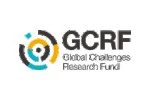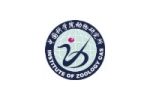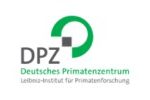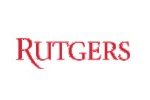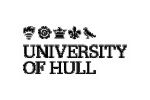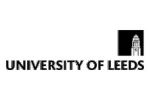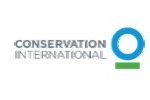Subsequent to a recently published study in Nature Conservation highlighting the gaps in the protection of Vietnam´s amphibians (https://blog.pensoft.net/2022/07/05/scientists-identify-gaps-in-the-protection-of-vietnams-amphibians/), Thomas Ziegler and his international cooperation team now present another threat analysis, this time dealing with a detailed assessment of Vietnam’s reptile fauna to uncover gaps in conservation.
Globally, reptiles are considered a group of special conservation concern, as they play an important role in almost all ecosystems and often have relatively small distribution ranges, making them especially vulnerable to anthropogenic threats.
As Vietnam’s herpetofauna is among the richest in the world and particularly threatened due to habitat loss and overharvesting for traditional medicine, pet trade, and food, it is critical to assess their conservation status.
The publication was based on the bachelor thesis of Lilli Stenger conducted at the University of Cologne, Germany. “Being able to focus my bachelor thesis on the threat status of the reptiles extant in Vietnam was a great opportunity and I am proud of this contribution,” says Lilli Stenger about her thesis project performed in Ziegler’s lab at the Cologne Zoo, Germany.
The scientists identified 484 reptile species known from Vietnam, noting that the number is likely to go up, as the country is regarded as a top biodiversity hotspot, and the rate of new reptile species discoveries remains high. As many as 159 (33%) reptile species are endemic to the country, with more than half of them (55%) reported exclusively from only a single locality, making them especially vulnerable to extinction.
“With 131 subregional endemic species and 88 of them restricted to their type locality, the country needs to establish additional local conservation areas to safeguard the microendemic species.” explains one of the authors of the present study, Prof. Dr. Truong Quang Nguyen of the Institute of Ecology and Biological Resources (IEBR), Hanoi.
According to the IUCN Red List of threatened species, 74 of the 484 species recorded from Vietnam are classified as threatened with extinction, including 34 endemic species. Most of threatened reptiles are lizards, followed by snakes and turtles, with 100% of the species in Vietnam listed as Vulnerable or higher. For more than half of Vietnam’s endemic reptiles (85 out of 159), the IUCN Red List status is either missing or outdated and further research is imperative for these species, the researchers say.
According to species richness maps, the Central Annamites region in central Vietnam harbors the highest endemic species diversity (32 species) as well as highest subregional endemic species diversity (21 species), which highlights it as a site of particular importance for reptile conservation .
“Integrating microhabitat level species richness maps and spatial patterns of local endemism rates is essential to identify priority areas for further conservation measures as habitat loss and increased anthropogenic pressures in these areas would adversely affect a higher number of species than it would in other areas” explains Associate Professor Dr. Dennis Rödder, curator of herpetology of the Leibniz Institute for the Analysis of Biodiversity Change, Museum Koenig in Bonn, Germany.
Alarmingly, a protected area analysis showed that 53 of the 159 endemic species (33.2%) including 17 threatened species, have been recorded exclusively from unprotected areas, such as the Critically Endangered Gia Lai Bent-toed Gecko or Endangered Peter’s Butterfly Lizard and Psychedelic Rock Gecko.
“For these species as well as for the 28 species considered Data Deficient (DD) or those whose conservation statuses have not been evaluated (NE), population assessments should be undertaken as quickly as possible to design appropriate conservation measures in due time,” says co-author Dr. Cuong The Pham from IEBR.
Successful protection must also include the listing of the most threatened endemic species in national and international legislations to provide them with additional support, as many threatened and/or endemic species are still missing from those legislations. The Vietnamese-German team already could achieve first promising results such as the inclusion of some threatened Vietnamese lizard species in the appendices of the Convention on International Trade in Endangered Species of Wild Fauna and Flora (CITES), but more of such advances are still needed.
According to data from Species360’s Zoological Information Management System (ZIMS), 109 (22.5%) of the total 484 species reported to occur in Vietnam are represented in global zoos, with the highest diversity concentrated in facilities in Europe and North America. However, only 6.3% (10 out of 159) of the Vietnamese endemic species are maintained ex situ, thus it is crucial that zoos consider shifting their focus to commit more resources to threatened endemic species.
In order to successfully protect threatened species and meet the objectives of the One Plan Approach of IUCN’s Conservation Planning Specialist Group (CPSG), which refers to the interaction of “in situ” (on site) and “ex situ” (in zoos and stations) measures involving various expertise and thus enabling optimized, contemporary species conservation, ex situ populations must be included in global conservation planning. “This is intended to support the in situ conservation efforts and to buy time as well as to save species from going extinct, as ex situ populations still are available for reintroductions” says co-author Anna Rauhaus, section keeper in Cologne Zoo’s Terrarium division, where 36 species of herpetofauna from Vietnam are held, 19 of them threatened and 25 species of them successfully bred, and most of them connected with in situ conservation measures in Vietnam. .
“Two most endangered turtle species in Vietnam and in the world, the Vietnamese pond turtle (Mauremys annamensis) and the Yangtze giant softshell turtle (Rafetus swinhoei), illustrate the significance of ex situ conservation measures. Both of the species are also not known from any protected area. While Mauremys annamensis is likely to be extinct in the wild, Rafetus swinhoei is on the brink of extinction. Whereas ex situ conservation programs have been implemented in time for Mauremys annamensis with a high number of individuals being kept and bred in zoos and stations, unfortunately, no such initiative has been established for Rafetus swinhoei”, Prof. Dr. Minh Le from the Hanoi National University emphasizes.
“In this regard, modern zoos, as well as local facilities, can play a crucial role in not only conducting or financially supporting in situ conservation projects, but also by protecting species from extinction through maintaining ex situ assurance colonies to reinforce in situ conservation programs, once needed. The Cologne Zoo in Germany and its partner, the Melinh Biodiversity Station in Vietnam, have already successfully implemented a number of conservation breeding initiatives for highly threatened species such as Vietnamese crocodile lizards or Tiger geckos “ explains Prof. Dr. Thomas Ziegler, Vietnam conservation team member and coordinator from Cologne Zoo, Germany.
The present study aims to provide a baseline to authorities, conservationists, rescue centers, and zoos, so that they can follow up with appropriate conservation measures for endangered Vietnamese reptiles.
Video clip:
The Critically Endangered Annam pond turtle (Mauremys annamensis) is one of the most endangered turtle species in Vietnam and in the world. It is not known from any protected area. Despite likely being extinct in the wild, ex situ conservation programs have been implemented in time with a high number of individuals being kept and bred in zoos and stations and now ready for restocking actions.
video taken in the Melinh Station for Biodiversity, Vietnam, clip by Prof. Dr. Thomas Ziegler, edited by Anna Rauhaus
Minh Duc Le, Dennis Rödder, Thomas Ziegler
Since the world is currently in the midst of a major biodiversity crisis, scientists have assigned high conservation priority to 36 biodiversity hotspots around the world. As part of one of the leading hotspots in terms of species richness and local endemism, Vietnam is considered a country with high conservation priority. The reptile fauna of Vietnam is known for its high level of diversity and an outstanding number of endemic species. Vietnamese reptiles are highly threatened due to habitat loss and overharvesting for domestic and international trade, traditional medicine and food, making them a group of great conservation concern. As a baseline for improved reptile conservation in Vietnam, we conducted a conservation assessment of Vietnamese reptile species by evaluating data from a variety of sources. Our study results show that approximately 32.9% (n = 159) of the total reptile species (n = 484) present in Vietnam are endemic to the country, of which more than half are only known from their type locality and about one-third restricted to a particular subregion, making the species particularly vulnerable to threats. Furthermore, 33.5% (n = 53) of 158 endemic taxa included in the protected area analysis have not yet been recorded from any protected area. Among all 418 Vietnamese reptile species listed on the IUCN Red List, 17.7% (n = 74) are threatened with extinction, 46.0% (n = 34) of the total 74 threatened species are endemic to Vietnam. The fact that 135 species are either listed as DD or have not yet been evaluated by the IUCN highlights the urgency of further research. Moreover, only very few species are protected by national or international legislation, and further assessments are needed to protect reptiles of particular concern. A Zoological Information Management System (ZIMS) analysis revealed that 22.5% (n = 109) of all reptiles occurring in Vietnam and only 6.3% (n = 10) of the endemic Vietnamese reptiles are currently kept in zoos worldwide. Although 60.8% (n = 45) of the threatened reptiles (n = 74) from Vietnam are currently held in zoos, only 23.5 (n = 8) of the endemic threatened species (n = 34) are held there. Following the IUCN CPSG`s One Plan Approach to Conservation, it is therefore recommended to increase the number of threatened and endemic species in breeding stations and zoos to maintain assurance populations, suitable for restocking measures. Despite ongoing efforts in Vietnam, further conservation measures are required. We therefore also identify areas of highest reptile diversity and with the largest number of threatened species and provide a list of 50 most threatened species (10% of total species) as a guide for further research and conservation action in Vietnam.
Key words
Conservation breeding, diversity, endemic species, protected area coverage, reptile conservation, threat analysis, Vietnam
show more details
Tags: Conservation breeding, diversity, endemic species, protected area coverage, reptile conservation, threat analysis, Vietnam

